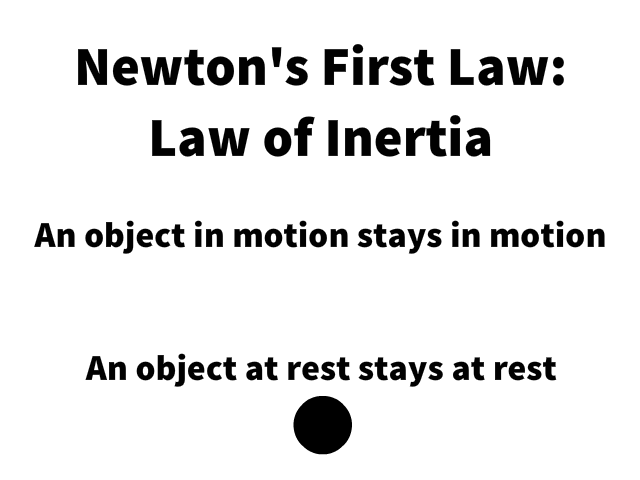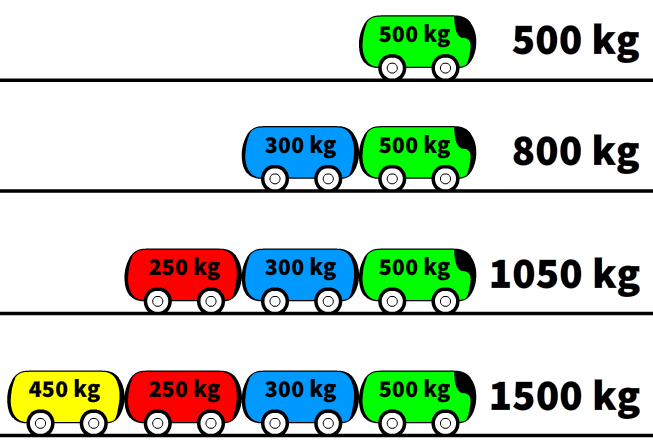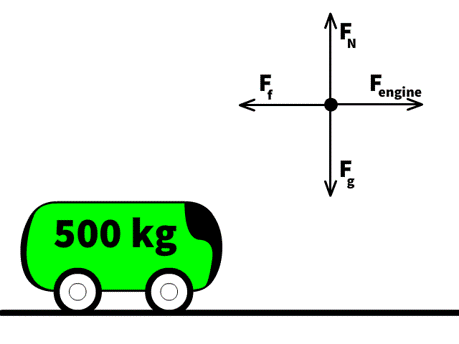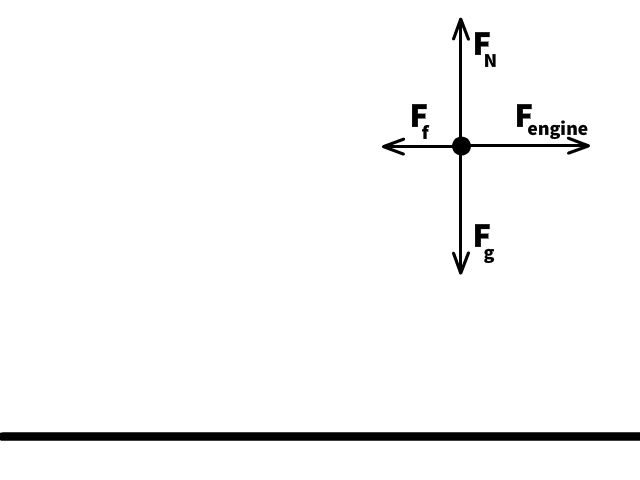Newton’s First Law of Motion
Newton’s First Law of Motion lays the groundwork for understanding dynamics by introducing inertia. It also explains how forces influence motion. Moreover, it allows us to analyze the resistance objects display when forces attempt to change their motion.
What is Dynamics?
Dynamics explores how forces create motion and goes beyond kinematics, which only describes motion. By focusing on the “why” behind motion, dynamics provides a deeper understanding of how objects respond to forces.
Newton’s three laws of motion are central to dynamics and explain how objects interact with forces. The first law, often called the law of inertia, states that objects at rest remain at rest. It also explains that objects in motion continue moving in a straight line unless acted upon by an external force. The second law connects force, mass, and acceleration. The third law highlights that forces always come in equal and opposite pairs. This page focuses on Newton’s First Law, providing the foundation for a deeper understanding of dynamics.
Galileo’s experiments with inclined planes set the stage for understanding inertia and how objects resist changes in motion.
What is Newton’s First Law? (Law of Inertia)

An object at rest stays at rest, and an object in motion continues moving at a constant speed in a straight line unless a net external force acts on it. This fundamental principle introduces the concept of inertia, which describes an object’s natural resistance to changes in motion.
Inertia is Directly Related to Mass
Imagine pushing a heavy boulder and a small rock on a flat surface. The boulder’s larger mass resists your efforts far more than the small rock. This difference demonstrates how mass directly influences inertia. Similarly, a freight train requires significantly more of an impulse to stop than a car because of a greater mass.
Misconceptions about Motion
Many people mistakenly believe that a force is required to keep an object in motion, but this is not true. An object in motion continues moving without any force as long as no external forces act on it. On Earth, friction often creates this misconception because it slows or stops moving objects. However, in space, where friction is almost nonexistent, objects move indefinitely. For example, planets orbit stars and comets travel through space without needing continuous force, demonstrating Newton’s First Law in space.
Analyzing Mass of Your System

Determining how many times more massive a system becomes is essential for solving ratio problems, often called the “rule of ones.” The difference in inertia due to mass directly impacts acceleration, which decreases as mass increases. This concept plays a key role in Newton’s Second Law: net force equals mass times acceleration. For a deeper dive or a refresher, check out this rule of ones explanation.
Ratios of Mass in a System of Carts
Analyzing a system of carts pulled by a green locomotive highlights the importance of comparing total mass to original mass. Determining the mass difference allows you to calculate how much force is needed to achieve the same acceleration. This understanding directly relates to Newton’s Second Law, linking force, mass, and acceleration. It also connects to Newton’s Third Law, which explains how forces interact between objects. Understanding this relationship is essential for analyzing motion dynamics and the resistance caused by inertia.

Green Locomotive Only:
The green locomotive alone serves as the baseline, equal to 1 times the original mass.

How many times more massive is the Green + Blue Cart:
The combined mass of the green locomotive and the blue cart, 800 kg, divided by the original mass of the green locomotive, 500 kg, equals 1.6 times the original mass.

How many times more massive is the Green + Blue + Red Cart:
The total mass of the green locomotive, blue cart, and red cart combined, 1050 kg, divided by the original mass of the green locomotive, 500 kg, equals 2.1 times the original mass.

How many times more massive is the Green + Blue + Red + Yellow Cart:
The combined mass of the green locomotive, blue cart, red cart, and yellow cart, 1500 kg, divided by the original mass of the green locomotive, 500 kg, equals 3 times the original mass.
Newton’s First Law of Motion: Equilibrium and No Net Force
Newton’s First Law of Motion explains equilibrium, which occurs when no net external force acts on a system. In this state, the system either stays at rest or continues moving in a straight line at a constant velocity. This stability happens because of inertia, which resists changes in motion and ensures the system maintains its current state unless influenced by an external force.
System in Static Equilibrium

In a system in static equilibrium, the forces acting on a stationary cart balance perfectly. The propulsion force points to the right, while the frictional force points to the left with equal magnitude, canceling each other out. At the same time, the weight of the cart pulls downward, and the normal force pushes upward with the same magnitude. These balanced forces ensure the cart remains at rest, demonstrating the concept of static equilibrium.
System in Dynamic Equilibrium

Consider a cart moving at a constant velocity, where all forces balance to maintain its motion. The propulsion force pushes to the right, while the frictional force opposes it with equal magnitude to the left. Meanwhile, the weight pulls downward, and the normal force counters it by pushing upward with the same strength. As a result of these balanced forces, the cart continues its motion at a constant velocity, demonstrating dynamic equilibrium without the influence of a net external force.
Newton’s First Law of Motion Conclusion
Newton’s First Law of Motion introduces the critical concept of inertia and forms a strong foundation for understanding dynamics. It explains how forces influence motion and how mass affects resistance to changes in motion. This principle bridges theoretical concepts with practical applications. It also connects directly to analyzing equilibrium, whether static or dynamic. Balanced forces either maintain motion or keep an object at rest. Newton’s Second Law builds on these ideas by clarifying the relationship between force, mass, and acceleration. This offers a deeper understanding of how systems behave under unbalanced forces. With these principles, you can confidently analyze complex motion scenarios in physics.

